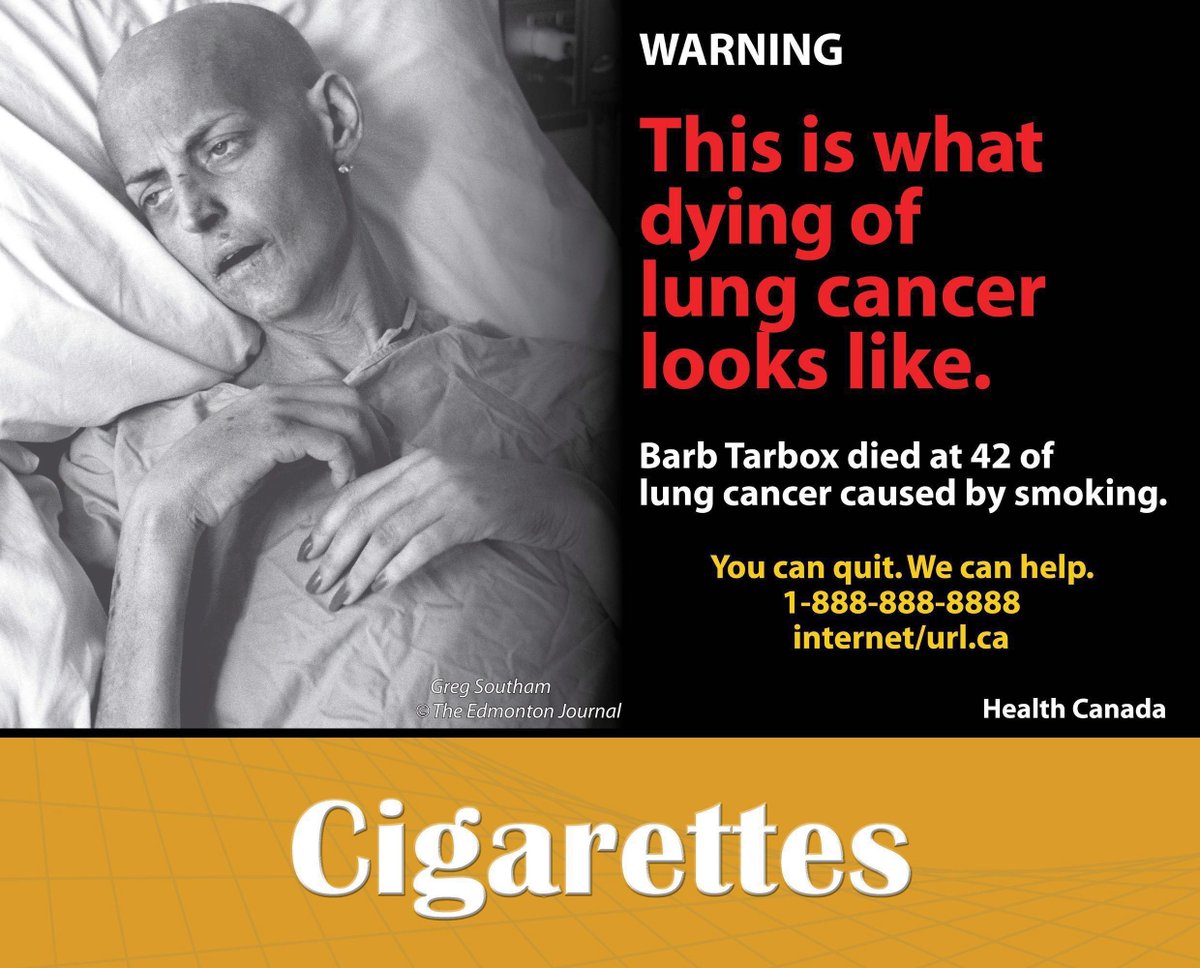
What happens when a smoker quits by switching to nicotine vapes ("e-cigarettes")?
THREAD
👇👇👇
THREAD
👇👇👇
(2) when a smoker switches to nicotine vapes
Excess lifetime cancer risk drops >10,000-fold, and is “lower than guideline values defined by EPA and WHO.” 2nd hand vapor risks are obviously even lower than that.
sciencedirect.com/science/articl…
Excess lifetime cancer risk drops >10,000-fold, and is “lower than guideline values defined by EPA and WHO.” 2nd hand vapor risks are obviously even lower than that.
sciencedirect.com/science/articl…
(3) when a smoker switches to nicotine vapes
A more conservative estimate found lifetime cancer risk drops “only” 99.5%. Lifetime cancer risk from smoking is 18%. 0.05% of that = 9 in 10,000 (a risk so low it would be difficult to measure).
tobaccocontrol.bmj.com/content/27/1/10
A more conservative estimate found lifetime cancer risk drops “only” 99.5%. Lifetime cancer risk from smoking is 18%. 0.05% of that = 9 in 10,000 (a risk so low it would be difficult to measure).
tobaccocontrol.bmj.com/content/27/1/10
(4) when a smoker switches to nicotine vapes
Their exposure to a major pulmonary carcinogen, NNAL, is reduced dramatically. (Results of a 4-arm, parallel-group, randomized, controlled trial funded by the US @NIH and @US_FDA.)
thelancet.com/journals/lanre…
Their exposure to a major pulmonary carcinogen, NNAL, is reduced dramatically. (Results of a 4-arm, parallel-group, randomized, controlled trial funded by the US @NIH and @US_FDA.)
thelancet.com/journals/lanre…
(5) when a smoker switches to nicotine vapes
According to @American_Heart Association research, biomarkers for heart health are indistinguishable from never-smokers. (Just ignore the reprehensibly misleading headline they chose to announce this.)
newsroom.heart.org/news/vaping-co…
According to @American_Heart Association research, biomarkers for heart health are indistinguishable from never-smokers. (Just ignore the reprehensibly misleading headline they chose to announce this.)
newsroom.heart.org/news/vaping-co…
(6) when a smoker switches to nicotine vapes
They experience positive cardiovascular impact within 3 days. The benefit did not differ between nicotine vapes and nicotine replacement therapies (e.g., nicotine patches or nicotine gum).
mdpi.com/2079-7737/10/1…
They experience positive cardiovascular impact within 3 days. The benefit did not differ between nicotine vapes and nicotine replacement therapies (e.g., nicotine patches or nicotine gum).
mdpi.com/2079-7737/10/1…
(7) when a smoker switches to nicotine vapes
Systolic and diastolic blood pressure, and blood pressure control, improve. And significant weight gains that are associated with cold turkey smoking cessation do not occur.
pubmed.ncbi.nlm.nih.gov/27845734
Systolic and diastolic blood pressure, and blood pressure control, improve. And significant weight gains that are associated with cold turkey smoking cessation do not occur.
pubmed.ncbi.nlm.nih.gov/27845734
(8) when a smoker switches to nicotine vapes
Blood vessel health improves as well.
jacc.org/doi/10.1016/j.…
nature.com/articles/s4156…
sciencedirect.com/science/articl…
Blood vessel health improves as well.
jacc.org/doi/10.1016/j.…
nature.com/articles/s4156…
sciencedirect.com/science/articl…
(9) when a smoker switches to nicotine vapes
Lung cilia which, in never-smokers, remove debris and bacteria from the lungs, recover full function.
medrxiv.org/content/10.110…
ncbi.nlm.nih.gov/pmc/articles/P…
Lung cilia which, in never-smokers, remove debris and bacteria from the lungs, recover full function.
medrxiv.org/content/10.110…
ncbi.nlm.nih.gov/pmc/articles/P…

(10) when a smoker switches to nicotine vapes
Respiratory tract infections drop dramatically.
dspace.stir.ac.uk/bitstream/1893…
This is consistent with social media surveys involving over 1,000 ex-smokers who vape.
Respiratory tract infections drop dramatically.
dspace.stir.ac.uk/bitstream/1893…
This is consistent with social media surveys involving over 1,000 ex-smokers who vape.

(11) when a smoker switches to nicotine vapes
If they have chronic obstructive pulmonary disease (COPD), their lung health and quality of life improve dramatically.
journals.sagepub.com/doi/full/10.11…
pubmed.ncbi.nlm.nih.gov/30197510
If they have chronic obstructive pulmonary disease (COPD), their lung health and quality of life improve dramatically.
journals.sagepub.com/doi/full/10.11…
pubmed.ncbi.nlm.nih.gov/30197510
(12) when a smoker switches to nicotine vapes
If they have asthma, they experience “significant improvement in asthma control and quality of life.”
pubmed.ncbi.nlm.nih.gov/31960343
pubmed.ncbi.nlm.nih.gov/27011045
mdpi.com/1660-4601/11/5…
If they have asthma, they experience “significant improvement in asthma control and quality of life.”
pubmed.ncbi.nlm.nih.gov/31960343
pubmed.ncbi.nlm.nih.gov/27011045
mdpi.com/1660-4601/11/5…
(13) when a smoker switches to nicotine vapes
Based on a study involving 19,000 people, 65% of smokers with asthma, and 76% of smokers with COPD, reported improvement in respiratory symptoms after switching to e-cigarettes.
mdpi.com/1660-4601/11/4…
Based on a study involving 19,000 people, 65% of smokers with asthma, and 76% of smokers with COPD, reported improvement in respiratory symptoms after switching to e-cigarettes.
mdpi.com/1660-4601/11/4…
(14) when a smoker switches to nicotine vapes
Findings: No significant changes in inflammatory cell counts, cytokines, mRNA or microRNA gene expression.
…erpreventionresearch.aacrjournals.org/content/early/…
Findings: No significant changes in inflammatory cell counts, cytokines, mRNA or microRNA gene expression.
…erpreventionresearch.aacrjournals.org/content/early/…
(14) when a smoker switches to nicotine vapes
They experienc an 87% reduction in mitochondrial gene "dysregulation" (a scary sounding word for changes in gene expression, which may-or-may-not have any relevance to health).
nature.com/articles/s4159…
They experienc an 87% reduction in mitochondrial gene "dysregulation" (a scary sounding word for changes in gene expression, which may-or-may-not have any relevance to health).
nature.com/articles/s4159…

(15) when a smoker switches to nicotine vapes
They're healthier. WE are healthier. Anyone who takes the slight trouble to ask us would discover this. How hard is that? Just ask us how we're doing.
Ignoring these health improvements is, literally, a crime against humanity.
They're healthier. WE are healthier. Anyone who takes the slight trouble to ask us would discover this. How hard is that? Just ask us how we're doing.
Ignoring these health improvements is, literally, a crime against humanity.

(16)
Finally, this: Nicotine is a natural product derived from plants. Half of all over-the-counter medicines (e.g., aspirin) are plant-derived.
So don't be surprised to learn that nicotine has therapeutic benefits. So does caffeine. So does cannabis. So does nicotine.
Finally, this: Nicotine is a natural product derived from plants. Half of all over-the-counter medicines (e.g., aspirin) are plant-derived.
So don't be surprised to learn that nicotine has therapeutic benefits. So does caffeine. So does cannabis. So does nicotine.

• • •
Missing some Tweet in this thread? You can try to
force a refresh

















